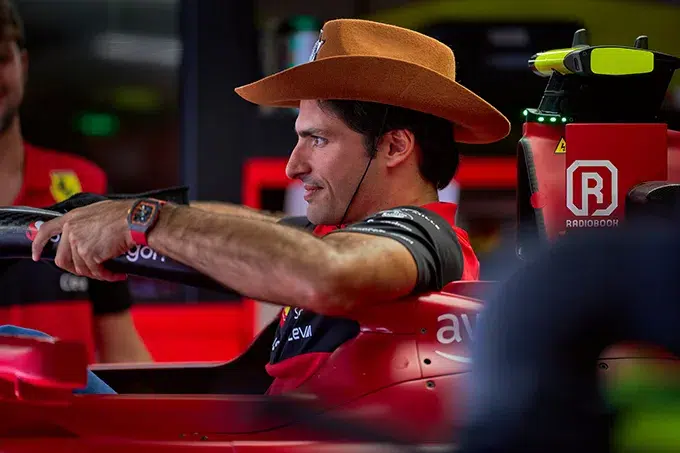Ferrari’s SF-24 will face a critical evaluation in Austin, testing recent upgrades across a range of challenging corners.
Frédéric Vasseur has stated that the United States Grand Prix will serve as a test for Ferrari, where the Scuderia can evaluate whether its SF-24 has a good balance across different types of corners.
“Austin marks the beginning of a very intense end to the season, with six races over eight weeks, split into two triple-headers. Since Singapore, we’ve been working relentlessly, and the high-speed corners of this circuit will provide a useful test for the upgrades we introduced in previous races,” Vasseur notes.
“As is always the case during a Sprint weekend, the work done at the factory before the event becomes even more crucial, with only one hour of free practice before immediately entering the competitive phase of the event, starting with qualifying for Saturday’s 100-kilometre race.”
“Charles, Carlos, and the entire team are well-prepared and eager to get back to racing, as always, aiming to extract maximum performance from our package. We need to be at our best, as the leading teams are very evenly matched, and there’s still everything to play for in the championship.”
Balance and degradation in focus
Carlos Galbally, Ferrari’s Vehicle Dynamics Director, confirms that the Circuit of the Americas is a challenging track for both cars and tires. The team’s objective will be to find a good balance between fast and slow corners.
“COTA is one of the most demanding circuits of the season, with a fairly equal split between left and right, and between front and rear, due to its long corners, frequent direction changes, and a mix of high- and low-speed turns.”
“As a result, both sets of wheels are heavily stressed, and it’s crucial to have a well-balanced car, particularly when it comes to managing the balance progression between low and high speeds.”
Despite resurfacing, Austin will remain a challenge for the tires: “Due to the high energy demands and the tire compound selection, it’s about finding the balance between proper tire warm-up for the first sector without running out of rubber by the third sector.”
“On the other hand, in the race, the high-speed esses in the first sector offer a unique opportunity to manage tire wear and limit energy usage while sacrificing a bit of lap time to minimize overall race time.”
Galbally also outlines the challenges of the Sprint format: “The Sprint format presents unique challenges for the engineers. Instead of the usual Friday focus on both short and long runs, FP1 becomes more centered on preparing for the Sprint qualifying session that follows immediately.”
“At the same time, with reduced practice time, it’s even more important than usual to have well-correlated simulation tools to be race-ready without needing to make significant changes to the car’s setup.”
- You may also like>A wild rumor links Piastri to a potential move to Red Bull
- Also make sure you follow us on social media>Facebook and>Twitter

Austin GP: Ferrari’s SF-24 Put to the Ultimate Test Austin GP: Ferrari’s SF-24 Put to the Ultimate Test
